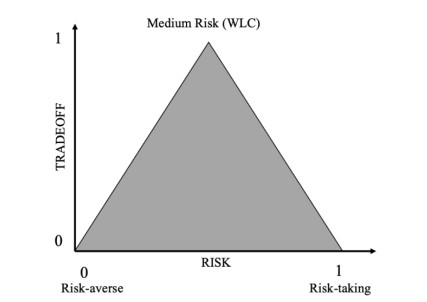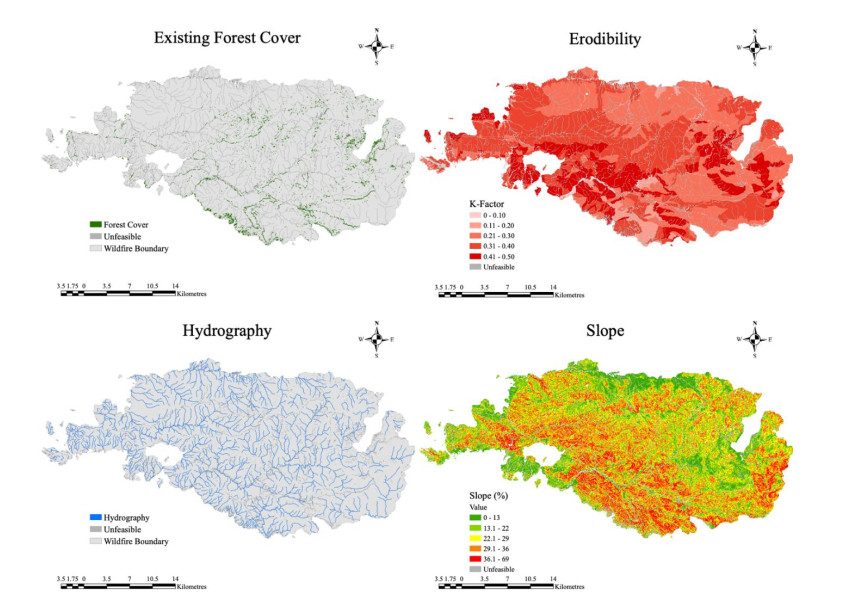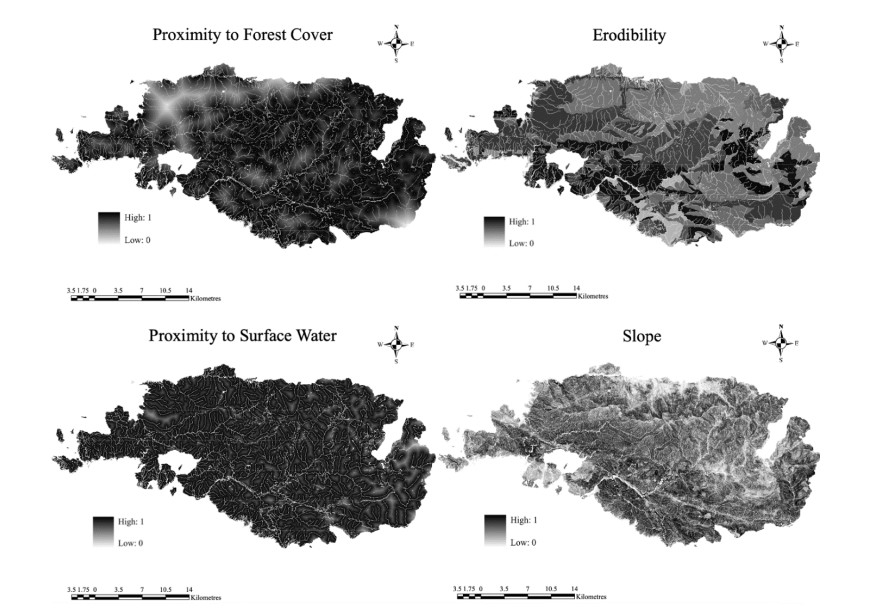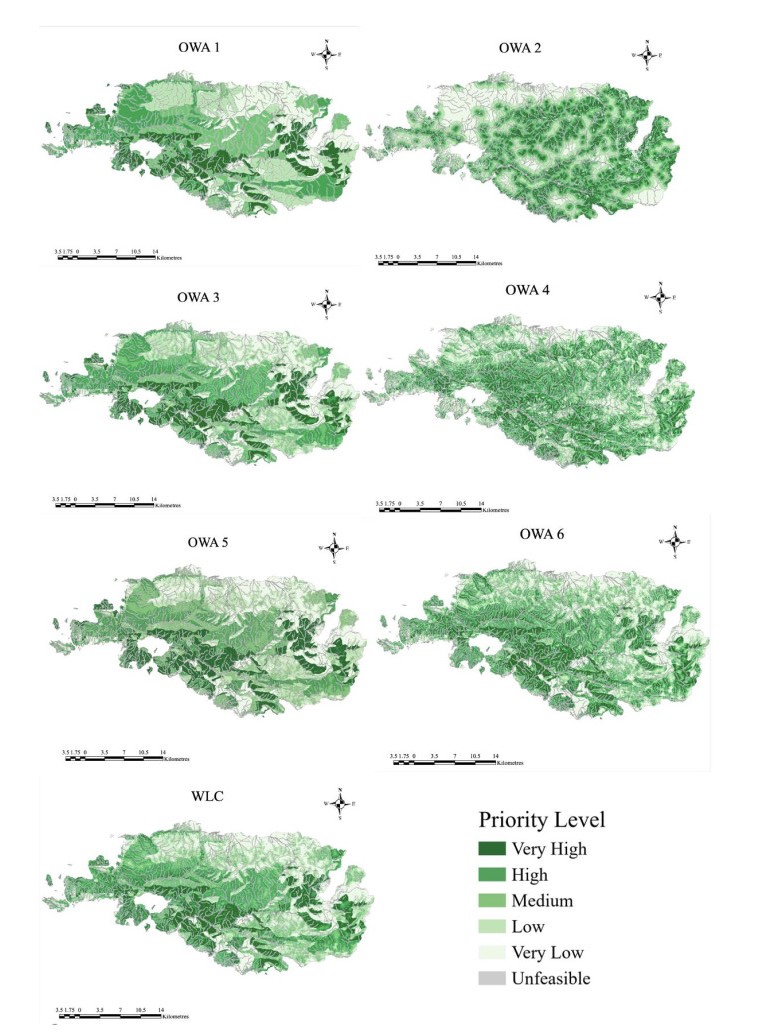Abbreviations: GIS: geographic information systems; MCDA: multi-criteria decision analysis; OWA: ordered weighted averaging; AHP: analytical hierarchy process; WLC: weighted linear combination
1.
Introduction
In recent years, there has been an increase in the intensity of natural disasters due to anthropogenic factors [1]. The greater intensity and frequency of these disasters is disrupting populated regions and displacing residents. A prevalent issue covered extensively in the media is the growing threat of, and damage from, wildfires in North America's west. In particular, the southwestern United States has experienced 400% more wildfires since 1970, along with burnt areas increasing by 600% [2]. It is predicted that these types of events will continue to increase in intensity and frequency [3]. Southern California, in particular, has experienced many large fires, which in recent years have displaced thousands of people in the region and had significant societal impacts [4].
Wildfires often impact vast geographic regions and are followed by considerable restoration efforts crossing regional and municipal boundaries [5]. Large restoration projects of this type involve many decision-makers and stakeholders with individual priorities and decision preferences [6]. These preferences can cause challenges for projects that compete for limited resources, making it important to prioritize restoration sites effectively. The allocation of resources in restoration projects often requires considering multiple landscape characteristics, especially those thought to be critical in achieving the objectives of the restoration efforts [7].
Spatial decision support aims to improve the effectiveness of decision-making by translating human knowledge into structured computer processes [8]. GIS has been used to tackle many complex decision problems through the integration of MCDA methods. GIS-based multi-criteria decision analysis (GIS-MCDA) is a procedure that combines geographic data and the decision-maker's preferences into composite decision maps. Many fields, including environmental and resource management, site selection, and natural hazard assessment have benefited from the use of GIS-MCDA to tackle complex spatial decision problems. For example, the GIS-MCDA has been applied in mapping the spatial variation of neotectonics landscape deformation [9], in landslide susceptibility mapping to aid in the development of appropriate risk reduction strategies [10,11], and identifying drinking water wellheads susceptible to groundwater contamination [12]. There are also many instances where GIS-MCDA has been employed in environmental and species management efforts. For instance, the technique has been applied to watershed prioritization based on soil and water hazard modeling [13], prioritizing landscapes within a basin for passive restoration [14], and management resources for vulnerable seabird species [15]. In this context, GIS-MCDA can assist in creating an adaptive management plan that would help to achieve long-term restoration goals.
Situations involving many stakeholders can create complex decision problems with conflicting preferences and inherent levels of uncertainty [8]. In the context of ecological restoration, all decision preferences must be considered to ensure the development of both informed and sustainable restoration projects. GIS-MCDA is a set of spatial decision support techniques that can help find the best compromise solution among individual decision-maker preferences. Due to the often-uncertain nature surrounding decision-making processes, it is desirable to incorporate the concept of risk into the calculations. This dimension of risk can be represented using Ordered Weighted Averaging (OWA) in a GIS setting [8]. The OWA technique requires the use of order weights in addition to criterion weights in the MCDA process.
OWA GIS-MCDA has been used for identifying areas at risk of forest fires [16], landslides [10,11], or floods [17], but we did not find prior research on its application to prioritize restoration sites in landscapes affected by wildfire. There are inherent uncertainties and conflict involved in forest restoration projects [18]. In addition to traditional MCDA methods being used in forest restoration [19], previous research has attempted to address and manage these uncertainties through a variety of other methodologies. Vogler et al. [20] developed a decision support model that can be applied by planners to determine restoration parameters and prioritize landscapes which align with overall restoration goals. This tool applied an optimization algorithm to analyze trade-offs between strategies under predetermined restoration goals. Other methods have also simulated long-term forest activity of restoration projects and future wildfires, as an attempt to address these uncertainties [21,22]. The issue of ecological degradation and destruction is a prominent concern, as there has been an increase in the frequency of extreme events resulting from a changing climate. In the context of forest restoration, the work most similar to our goals is the study by Lopes et al., who implemented OWA GIS-MCDA to identify priority areas for landscape and water resource restoration in the Upper Teles Pires Basin in Brazil [23].
This paper investigates the efficacy of applying OWA GIS-MCDA for prioritizing landscapes in ecological restoration projects in areas affected by wildfires. The 2009 Station Fire in the San Gabriel Mountains of the Angeles National Forest serves as a case study. In this context, OWA GIS-MCDA is used to identify and rank regions of varying priorities for restoration. Both the expert opinions and criteria used in this case study were extracted from Lopes et al. [23]. Restoration efforts involve complex dynamics between site characteristics and stakeholder preferences in landscape prioritization objectives. We aimed to determine whether "order weights" can effectively represent the stakeholders' risk attitudes. Such an approach would allow for the informed allocation of resources and the consideration of various decision-maker preferences in wildfire restoration efforts. In the subsequent sections of this paper, we describe and explain the data used to represent these site characteristics, the methodology to prioritize sites based on stakeholder preferences, along with an analysis and discussion of the results.
2.
Materials and methods
2.1. Case study: the 2009 California Station Fire wildfire
In recent years, much of southern California has experienced devastating wildfires, with some destroying homes, displacing entire communities and impacting thousands of residents [24]. The frequency and intensity of wildfires have increased drastically in the region, putting many residents at an increased risk. In 2009, roughly 20 wildfires burned throughout Southern California, the largest and most devastating being the Station Fire in the Angeles National Forest that ended up burning 680km2 of forest land [25]. The Station Fire affected a large area of the San Gabriel Mountain range, situated northeast of Los Angeles, California. At the time of the fire, it was considered the 10th-largest fire in state history and destroyed 89 residences [26]. Some attribute the increase in wildfires in Angeles National Forest to increased human activities in the forest and foothills [27]. The increase in wildfires has continued to impact the area's water resources and biodiversity, in addition to posing public health concerns as a result of air pollution [28,29].
The study area chosen for the case study is the fire perimeter of the 2009 Station Fire (see Figure 1). The climate of the Station fire area and surrounding region is semiarid Mediterranean, characterized by the areas warm, dry summers, and cool, wet winters [30]. The area has short precipitation seasons and a long dry season, with the overall mean annual temperature of the area ranging from 13–17 degrees Celsius and a mean precipitation ranging from 51–89 cm [25]. The steep topography of the Angeles National Forest makes the region particularly susceptible to extreme fire behaviour, as steep slopes can promote the heating of fuels and lead to rapid upslope fire spread [26].
The criteria chosen for the case study were extracted from Lopes et al. [23]. That paper's objective is to prioritize areas for forest restoration with the aim of water resource conservation for a basin in Brazil and its criteria were determined through the consultation of experts [15]. The adopted criteria are proximity to forest, erodibility (k), slope, and proximity to water surfaces. An overview of the criterion layers and data sources used in this case study are displayed in Table 1.
2.2. Multi criteria decision analysis: criteria and constraints
It is important to consider the relevance of each criterion in the context of the OWA decision objectives. Applying MCDA requires that each individual criterion and the set of criteria reflect the multicriteria nature of the spatial decision objectives [8]. The criteria consist of measurable attributes that hierarchically relate to the decision objectives. Understanding the role each criterion plays in the context of landscape prioritization will allow for a thorough understanding of how each contributes to the decision objective and final composite maps.
Proximity to forest: The proximity of prospective restoration sites to existing forest cover is an important criterion to consider, as the removal of vegetation can increase the risk of soil erosion. Also, vegetation assists in water infiltration processes, reducing both surface runoff and the levels of pollutants found in a water body. For these reasons, locations near existing forest coverage are considered a higher priority for restoration than isolated locations [23]. The dataset displaying existing vegetation coverage within the study areas was processed to display forest cover. A distance surface for existing forest coverage was then calculated. The data for this criterion were obtained from the LANDFIRE Programs geospatial data platform.
Slope: The slope characteristics of a region's geography plays an important role in determining soil degradation, with higher degrees of slope resulting in higher amounts of erosivity [31]. The increase in erosive processes can significantly impact the health of a watershed. In the context of the decision objectives, locations with greater slope degrees are of greater priority for restoration than locations with lesser slope [23]. The data used for the slope variable was gathered from the LANDFIRE Programs geospatial data platform.
Erodibility: The erodibility characteristic of soil, commonly expressed as the K-factor, is a parameter used to determine soil's intrinsic susceptibility to particle detachment and loss rates [32]. The erosion of soils into a watershed can greatly impact water quality in a region. For this reason, areas with high K-factors are sensitive regions of a watershed, therefore making these locations of greater priority for restoration. The erodibility factor data was obtained from the USDA Natural Resources Conservation Service.
Proximity to surface water: Vegetation in riverbanks near water bodies plays a vital role in runoff interception and increasing pollutant retention [33]. Surface runoff levels significantly increase post-wildfire, making it essential to prioritize regions close to surface water. Regions of the study area in close proximity surface water are considered greatest priority. To effectively display this criterion, hydrography and water bodies datasets were used to calculate distances from surface water. The data used for this criterion was obtained from the California Natural Resources Agency's National Hydrography Dataset.
2.3. Application of ordered weighted averaging
The application of OWA fuzzy operators in GIS-MCDA allows decision-makers to develop multiple composite suitability maps, each emphasizing a particular level of risk preference. This method creates a decision space bounded by the risk-averse AND operator, the risk-neutral WLC operator, and the risk-taking OR operator (see Figure 2). This dimension of risk added by OWA allows the analyst to create a wide range of decision maps displaying varying levels of risk and tradeoff (see Figure 2) [34]. For example, in a decision situation with four criteria, using the order weights of [0 0 0 1] gives full weight to the lowest criterion of each location, resulting in the risk-averse (AND) strategy and no tradeoff. Applying the ordered weights in the sequence [1 0 0 0] results in full ORness (risk-taking strategy) and no tradeoff. Using order weights [0.25 0.25 0.25 0.25] yields the WLC operator, with intermediate risk and full tradeoff between criteria. Tradeoff here refers to the degree to which good or bad performance in one criterion can be substituted for bad or good performance in another criterion [34].
3.
Data analysis and results
Prior to the implementation of the above methods to the case study, it is important to apply any necessary constraints to eliminate locations within the wildfire boundaries that are considered not relevant or not feasible for restoration. Due to the study area being in a mountainous region and previously heavily forested, the only constraints applicable were surface water and existing forest coverage. Applying these constraints resulted in all criteria maps having surface water and forest cover removed (see Figure 3).
The remaining GIS workflow is shown in Figure 4. As areas in close proximity to existing forest and hydrography are considered high priority, a distance raster was calculated for both criteria. This process resulted in two distance raster layers with values increasing as distance increases from each land cover type. Distance raster values are not necessary for either the slope or erodibility criteria, as each criterion value is determined by the local conditions (criterion values) as opposed to proximity to given landscape features.
3.1. Rescaling criteria using score-range procedure
Applying GIS-MCDA requires each criterion to be rescaled to comparable units [8]. There are various methods for rescaling variables; however, a common approach is the score-range procedure's linear scale transformation [35]. For the maximization of a criterion, the score-range procedure subtracts the minimum value from each local value, then rescales this difference by dividing it by the criterion's total value range [36]. This process results in each criterion being rescaled from 0–1, with higher values being associated with a benefit (Formula 1). In contrast, a variation of the score-range procedure can be applied for criteria in which higher values are associated with less attractive outcomes, or costs, by subtracting each value from the maximum and then dividing by the range (Formula 2).
As a distance raster generates higher values as distance increases, both raster layers for the proximity to forest and proximity to surface water criteria were rescaled using the minimization variant of the score-range procedure, where high values are associated with close proximity to existing forest and water. For the erodibility and slope criteria, the maximization variant was used, resulting in the rescaled variable displaying higher values for regions with higher erodibility and slope, respectively. This process resulted in all four criteria layers being rescaled from 0–1 and in a comparable direction of contributing to a composite index (see Figure 5). The variation of the score-range procedure applied to each criterion is presented in Table 2.
3.2. Application of importance weights
A crucial aspect of GIS-MCDA is the application of criterion weights; a value assigned to a criterion that indicates its importance relative to other criteria under consideration [8]. Often, criterion weighting is determined by using AHP [37]. This process involves the pairwise comparison of criteria, requiring decision-makers to specify individual preferences. The criterion weights used in the underlying case study by Lopes et al. were determined by consulting fifteen experts in Hydrology, Irrigation, Soil Management, Forest Restoration, and Geoprocessing [23]. The importance weights for each criterion are displayed in Table 3 (with the total equal to 1, or 100%). Erodibility has the greatest importance weighting, followed by both hydrography and slope, and finally proximity to forest. Each criterion layer was multiplied by its respective importance weight, resulting in four new, weighted raster layers.
3.3. Reordering criterion values across the criterion layers
Integrating the OWA technique into the GIS-MCDA process involves the application of a second set of weights. These order weights modify the criterion values on a location-by-location basis, in descending order [38]. To reorder the values of the weighted criteria, four ancillary raster layers were created, each containing a single raster value from 1 to 4. Each of these constant raster layers were then combined, using the Rank tool in ArcGIS Pro, with the four weighted criterion layers to extract the highest, second highest, third highest, and fourth highest values. The Rank tool sorts the values of the criterion raster layers on a cell-by-cell basis from lowest to highest, with the value of the constant raster determining which raster value is written into a new output layer. For example, the constant raster value of 4 creates a new raster layer comprised of the highest priority values at each cell location. Repeating this process resulted in four new raster layers consisting of the reordered values at each cell location.
3.4. Application of order weights
Applying different sets of order weights will create different composite maps, with each representing a particular decision strategy and degree of risk [34]. The order weights are applied to each of the reordered criterion layers in descending order. Since importance weights were already applied to each criterion before the reordering step, a risk-taking OWA strategy that applies the greatest order weight(s) to the highest criterion value(s) is likely to display a spatial distribution similar to that of the criterion with the highest importance weight. This process assigns higher order weights to higher-ranking criteria at a given location, at the expense of applying low order weighting to lower-ranking criterion [38]. Applying the order weights for each OWA strategy consists of multiplying the cell values of each reordered raster layer by the corresponding order weight, then proceeding to sum the order-weighted raster layers into a final composite decision map. The various OWA strategies applied in the case study are displayed in Table 4.
It is advisable to consider multiple decision strategies to examine the varying levels of priority that result from placing greater order weights on different portions of the weighted criterion value range. In Table 4, the OWA 1 and OWA 2 strategies represent the two extremes of the OWA decision space. OWA 1 places full order weighting on the single "best" criterion value at each location. This strategy is considered risk-taking because it ignores any "poor" criterion values. In contrast, OWA 2 represents a risk-averse strategy, applying full order weighting to the "worst" criterion value at each location. In doing so, this strategy prioritizes the "least bad" locations but ignores their performance in "good" and mid-range criteria.
Applying equal order weights to all criteria results in a medium-risk decision strategy and is reflective of each criterion's importance weighting. Integrating order weights in this manner yields an operator with intermediate ORness, creating an identical spatial distribution to that of the traditional WLC technique. In addition to these three strategies, Table 4 shows the parameters for another four intermediate strategies. OWA 3 (OWA 4) place 45% weight on the highest (lowest), 34% on the second highest (second-lowest), 20% on the third-highest (third-lowest), and 1% on the lowest (highest) criterion value at each location. OWA 5 emphasizes both extremes by placing 35% of the weight on the highest and 35% on the lowest value, with 15% remaining for each of the intermediate values. Conversely, OWA 6 emphasizes the middle of the criterion value range at each location by placing 35% on each of the middle values and only 15% on the highest (best) and lowest (worse) value. The priority maps resulting from the sum of the order-weighted criterion layers are displayed using quintile classes for very low, low, medium, high, and very high priority levels for comparability (see Figure 6).
4.
Discussion
The final WLC map, displayed in Figure 6, can act as a reference when considering the impact of the AND and OR operators on landscape prioritization. In the WLC strategy, all order weights are equal, resulting in a composite map influenced only by each criterion's importance weight. This decision strategy offers full trade-off and is considered medium risk-taking. Jiang and Eastman [34] explain that WLC decision strategies result in the traditional averaging operator of the MCDA process. Due to the high importance weight applied to the erodibility criterion, the WLC map displays many of the same spatial clusters seen in the erodibility layer. In particular, the southwestern and eastern regions of the study area are considered high to very high priority, with the center and western regions displaying high to medium priority values. In contrast, the northernmost regions of the study area display low to very low priority for restoration in the WLC composite map. In medium and low priority regions of the WLC decision map, the influence of proximity to surface water and slope is discernable. In particular, an increase in priority levels can be seen surrounding much of the surface water throughout the study area. Malczewski and Rinner [8] state that the WLC decision strategy offers a final composite map reflective of the decision makers' importance weightings. By applying the WLC method to criteria in the Bindra watershed, Jhariya et al. [13] successfully identified priority sub-watersheds for soil and water conversation. This decision strategy has been applied in many studies prioritizing land for restoration in watersheds, where regions considered high priority often display similar spatial characteristics in the criteria that were given the greatest importance weighting [9,19,39]. Similarly, Lopes et al. [23] reported the WLC strategy producing a prioritization map heavily influenced by the erodibility criterion.
Decision strategies OWA 3 and OWA 5 display composite maps that increasingly approach the OR operator. As the decision strategies move towards the most risk-taking strategy, placing growing order weight on the highest values, the influence of the erodibility criterion on priority values becomes most apparent. Although the influence of the proximity to surface water and slope are detectable in low priority regions, the medium to very high priority clusters begin to display more spatial uniformity, characteristic of the erodibility criterion. In contrast to the OWA 3 and OWA 5 strategies, the OWA 4 and OWA 6 maps represent decision strategies approaching the AND, or risk-averse, operator placing greater order weights on low-ranking values. In this context, the lowest ranking values likely belong to proximity to forest cover, as this criterion received the lowest importance weighting. Therefore, as the order weights approach the extreme AND decision strategy (OWA 2), regions considered high priority become increasingly dispersed throughout the study area. In particular, the OWA 4 strategy displays a decision map in which the spatial clustering of the erodibility layer is no longer discernable. Other research has confirmed the utility of incorporating a variety of OWA strategies and risk preferences. Vettorazzi and Valente [40] conclude that a major benefit of implementing OWA in forest restoration is the technique's ability to generate a set of alternative priority maps within a range of risk preferences. In this study, implementing the OWA method allowed the authors to identify priority area which aligned with pre-defined objectives of the decision problem. In addition, Ahmed [11] found OWA applications to be more accurate than traditional WLC methods in landslide susceptibility mapping.
The 2009 Fire Station case study effectively illustrates the impact of the GIS-MCDA importance weighting and OWA decision strategies on the resulting restoration priority scores. The OWA technique involves reordering criterion values at each location and applying the order weight in descending order. This process is greatly influenced by the relative magnitudes of the criterion values at each location. It is important to note that the extreme decision scenarios presented in OWA 1 and OWA 2 may not represent a desirable solution for wildfire restoration, as neither allows for any location-specific trade-off between the factors that were considered relevant by the experts consulted by Lopes et al. [15]. The application of strategies OWA 3, OWA 5, and WLC yields final maps with similar spatial distributions of priority classes. Analogous to a formal sensitivity analysis, these consistent outcomes can give the analyst some confidence in the results. All three of these strategies are associated with a medium risk-taking attitude, since high performing criteria are emphasized regardless of poor performance in other criteria. As the order weights continue to place less emphasis on the highest values, in the case of OWA 6 and OWA 4, the spatial distribution of the priority levels changes drastically. In these scenarios, many of the areas previously considered low priority are displayed as very high priority, resulting in a highly dispersed priority landscape. Both the OWA 6 and OWA 4 scenarios are examples of decision strategies that offer a moderately low degree of risk, and in the context of the decision, would be considered risk-averse since they ensure that poor performing criteria are taken into account for each location's priority assessment.
5.
Conclusion
For the example of the 2009 California Station Fire, the integration of the OWA technique into a GIS-MCDA process allowed for creating and comparing multiple decision maps, each displaying different spatial distributions of prioritized areas for restoration. The application of order weights in conjunction with the more common importance weights resulted in seven decision scenarios, each of which placed emphasis on different patterns of criterion performance. The two extreme OWA operators OR and AND should not be regarded as applicable for prioritizing land. Though these scenarios offer valuable information about the influence of weighted criteria, they result in composite scores that exclude all but one criterion. The strategies OWA 3, OWA 5, and WLC present spatial distributions of priority scores exemplary of high to medium levels of decision risk. Conversely, the OWA 4 and OWA 6 strategies represent a moderately low risk for land prioritization. Importantly, all of these intermediate decision strategies include tradeoffs between high- and low-performing criteria.
GIS-MCDA is a core spatial decision support tool. Integrating the OWA technique allows for the consideration of diverse decision-maker preferences and risk attitudes. Its greatest value might be in exploring how various sets of order weights will influence the spatial distribution of priority lands. Although OWA GIS-MCDA has been previously applied in forest restoration efforts, it has not been used in regions that have experienced wildfires [23,40]. Employing OWA GIS-MCDA in the context of wildfire restoration supports informed decision-making on land prioritization for restoration projects. As restoration efforts often operate under limited resources, prioritizing landscapes in an informed manner is crucial in ensuring a project's sustainability and long-term success. The necessity of spatial decision support in this context is increasing, as a changing climate has increased the intensity and frequency of wildfires [2].
It is also important to note the limitations associated with this research. One notable limitation is in the interpretation of the priority levels determined in the case study. The criteria and associated importance weighting used in the case study were derived from Lopes et al., which uses OWA to prioritize land for restoration to maintain water resources for a basin in Brazil [23]. Therefore, the criteria may not be directly applicable to the Station Fire study area in the Angeles National Forest. Further, due to the environmental and climatic differences between the two regions, criterion importance weights may also differ.
The case study should be considered as an example for the evaluation method and process rather than an assessment of the lands affected by the Station Fire. To determine priority land for restoration in the area of interest, local experts should be consulted to determine both the relevant criteria and importance weights. In addition, future case studies of OWA GIS-MCDA in prioritizing land for wildfire restoration should establish and refine the applicability of this method and may help with the development of a generic set of criteria, importance weights, and decision strategies for practical applications.
Acknowledgments
This research was partially funded by a Natural Sciences and Engineering Research Council of Canada (NSERC) Discovery Grant.
Conflict of interest
The authors declare no conflicts of interest in this paper.
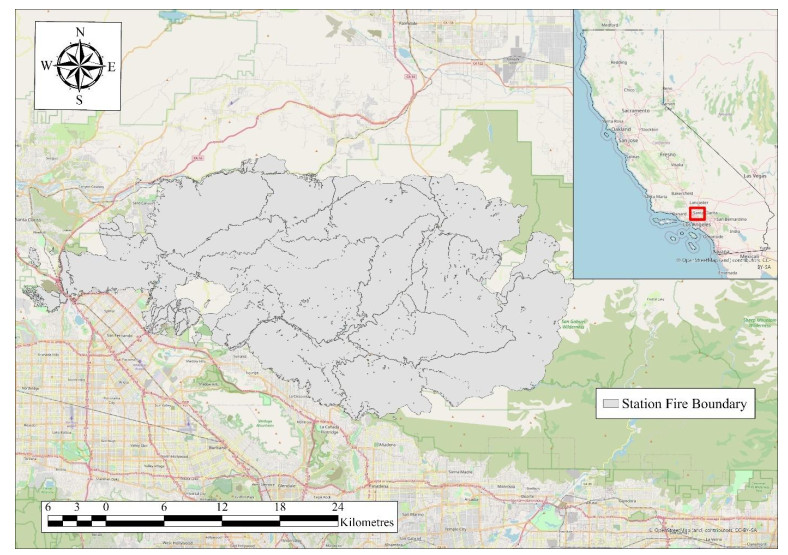









 DownLoad:
DownLoad:
